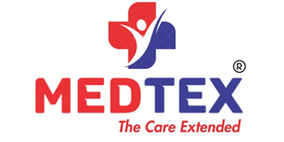Introduction
Deep Vein Thrombosis (DVT) is a serious condition characterized by the formation of blood clots in the deep veins, usually in the legs. If left untreated, these clots can travel to the lungs and cause a life-threatening condition called pulmonary embolism. Managing DVT is crucial to prevent complications and promote overall well-being. In this comprehensive guide, we will explore effective management strategies for DVT, empowering you to take control of your health and minimize the risks associated with this condition.
Medication-Based Treatments
-
Anticoagulants: Also known as blood thinners, anticoagulants are commonly prescribed to prevent the growth of existing blood clots and the formation of new ones. These medications work by inhibiting the clotting factors in the blood. It is important to follow the prescribed dosage and monitor the blood's clotting time regularly.
-
Thrombolytics: In severe cases of DVT, thrombolytic medications may be used to dissolve blood clots quickly. These medications are administered intravenously and are typically reserved for situations where there is a high risk of pulmonary embolism or significant impairment of blood flow.
Compression Therapy
Compression therapy is a widely used and effective management strategy for DVT. It involves the use of compression stockings or sleeves that apply gentle pressure to the affected limb, promoting blood flow and preventing the pooling of blood. Compression stockings are available in different compression levels and lengths, and they should be worn consistently as prescribed by healthcare professionals. These stockings provide graduated compression, with the highest pressure at the ankle and gradually decreasing as it moves up the leg.
Physical Activity and Exercise
Regular physical activity and exercise play a crucial role in managing DVT. Engaging in low-impact exercises, such as walking, swimming, or cycling, helps promote blood circulation and prevents blood from stagnating in the veins. It is important to consult with your healthcare provider before starting an exercise routine to ensure it is safe and appropriate for your condition.
Lifestyle Modifications
Certain lifestyle modifications can also contribute to effective DVT management:
-
Maintain a Healthy Weight: Excess weight puts additional strain on the veins, increasing the risk of blood clot formation. Adopting a healthy diet and engaging in regular exercise can help achieve and maintain a healthy weight.
-
Avoid Prolonged Immobility: Long periods of sitting or standing can increase the risk of blood clot formation. Take regular breaks to move around and stretch, especially during extended travel or sedentary activities.
-
Stay Hydrated: Drinking an adequate amount of water helps keep the blood from thickening, reducing the risk of clot formation. Aim to stay well-hydrated throughout the day.
Follow-Up Care and Monitoring
Regular follow-up care is essential for effective DVT management. This may include periodic visits to your healthcare provider to monitor your progress, adjust medication dosages if needed, and evaluate the effectiveness of compression therapy. It is important to communicate any new or worsening symptoms to your healthcare team promptly.
Conclusion
Taking control of Deep Vein Thrombosis (DVT) requires a comprehensive approach that combines medication-based treatments, compression therapy, physical activity, lifestyle modifications, and regular follow-up care. By following these management strategies, you can reduce the risk of complications and promote your overall well-being. Remember to consult with your healthcare provider for personalized advice and guidance tailored to your specific condition. With effective management strategies in place, you can navigate life with DVT and maintain a healthy and fulfilling lifestyle.












